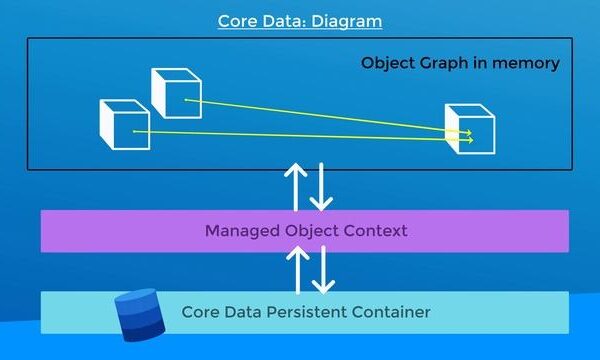Introduction
Artificial intelligence is now embedded in finance, healthcare, education, law enforcement, and everyday digital services. These systems often make or at least influence decisions that affect people lives. This raises one central ethical question can machines be truly fair?
Fairness in AI is not just a technical problem. It is a socio technical challenge involving data, algorithms, institutions, and human values. Understanding AI fairness requires analyzing the entities, attributes, and contexts that shape decision making.
Core Entities and Attributes
Artificial Intelligence AI
- Attributes: machine learning, natural language processing, computer vision, predictive analytics.
- Role: automates decision making processes.
Fairness
- Attributes: equality, impartiality, bias reduction, justice.
- Context: defined differently across cultures and industries.
Bias
- Attributes: data bias, algorithmic bias, human bias, systemic bias.
- Outcomes: discrimination, unfair outcomes, reinforcement of inequalities.
Data
- Attributes: source, quality, representativeness, labeling accuracy.
- Role: the foundation of all machine learning.
Algorithm
- Attributes: model architecture, training process, optimization objectives.
- Relation: determines how decisions are derived.
Accountability
- Attributes: governance, transparency, explainability, auditing.
- Role: ensuring humans remain responsible for AI outcomes.
Human Oversight
- Attributes: intervention, monitoring, value alignment.
- Purpose: prevent fully autonomous unfair decisions.
Can Machines Be Truly Fair?
The Argument for Yes
- Machines do not have emotions, prejudices, or personal agendas.
- Algorithms can be designed to minimize bias and maximize fairness metrics.
- AI can reveal hidden biases in human decision making and enforce consistent standards.
The Argument for No
- Machines learn from historical data, which often reflects societal inequalities.
- Algorithmic fairness depends on human definitions of fair, which differ by culture and legal frameworks.
- Trade offs exist between accuracy, efficiency, and fairness true neutrality may be impossible.
The Middle Ground
AI can be more fair than biased humans in some contexts, but it can also scale unfairness faster when left unchecked. The true challenge lies in aligning AI systems with ethical, legal, and social norms.
Frameworks for AI Fairness
- Fairness Through Unawareness: removing sensitive attributes like gender or race from data.
- Demographic Parity: ensuring equal outcomes across groups.
- Equal Opportunity: ensuring equal access to positive decisions.
- Causal Fairness: examining whether sensitive attributes cause biased outcomes.
- Value-Sensitive Design: embedding human values into system design from the start.
Real World Examples of AI Fairness Challenges
- Hiring Algorithms: Favoring candidates based on biased historical recruitment data.
- Credit Scoring Systems: Denying loans disproportionately to minorities.
- Facial Recognition: Higher error rates for darker skin tones and women.
- Predictive Policing: Reinforcing existing policing biases in certain neighborhoods.
Each example highlights how fairness is context dependent and must be carefully audited.
Ensuring Fairness in AI
- Diverse Datasets: Broader representation reduces systemic bias.
- Bias Audits: Continuous testing of models for fairness.
- Explainable AI XAI: Making decision making processes transparent.
- Regulation and Governance: Laws that define ethical AI boundaries.
- Stakeholder Involvement: Including ethicists, sociologists, and affected communities.
The Future of AI Fairness
- Ethical AI Standards: Global frameworks for fairness will emerge.
- AI for Social Good: Using fairness aware algorithms to reduce inequality.
- Hybrid Oversight: AI systems with mandatory human in the loop governance.
- Dynamic Fairness Metrics: Adaptive algorithms that adjust fairness definitions based on evolving norms.
What does fairness mean in AI?
Fairness in AI means making decisions without unjust bias, discrimination, or favoritism.
Can machines ever be fully fair?
Not completely, since fairness depends on human values, culture, and legal standards.
Why do AI systems become biased?
They learn from historical data, which often reflects existing human and social inequalities.
How can AI reduce bias?
By using diverse datasets, fairness aware algorithms, and regular bias audits.
What role does human oversight play in AI fairness?
Humans must monitor, guide, and adjust AI systems to align with ethical standards.
Are all fairness definitions the same?
No, fairness can mean equal outcomes, equal opportunities, or unbiased processes, depending on context.
What are examples of unfair AI?
Biased hiring tools, discriminatory credit scoring, and facial recognition errors.
How do we measure fairness in AI?
Through metrics like demographic parity, equal opportunity, and causal fairness tests.
Can AI be more fair than humans?
Yes, in some cases, since machines can apply consistent rules without personal prejudice.
What is the future of AI fairness?
It involves global standards, explainable AI, and continuous oversight combining humans and machines.
Conclusion
Machines cannot be truly fair in the absolute sense because fairness is a human value, not a purely mathematical construct. However, AI can enhance fairness by reducing human bias, applying consistent rules, and revealing structural inequalities. The challenge is not whether machines can be fair, but how humans design, regulate, and monitor them.
AI ethics, therefore, is less about achieving perfect fairness and more about continuous negotiation between technology, society, and values.


